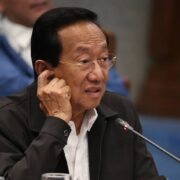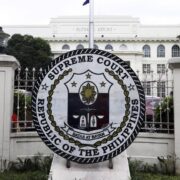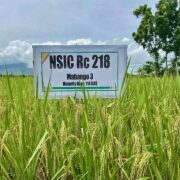DENR’s glaring negligence

The Department of Environment and Natural Resources (DENR) is now making noises about investigating the mountainside residential project Monterrazas de Cebu, following the catastrophic flooding that hit the city and province during Typhoon “Tino.”
There it is again—bolting the barn doors after the horses have fled.
The DENR said in a statement that it is “committed to protect communities and uphold environmental laws,” and that it remains steadfast in its mission “to balance development with environmental protection and to ensure that every project operates in full compliance with the law.”
For the upcoming probe of Monterrazas, it has assembled a formidable-looking group: “technical experts from the DENR Region 7, Environmental Management Bureau, Mines and Geosciences Bureau, Provincial Environment and Natural Resources Office Cebu, Community Environment and Natural Resources Office Cebu City, the Cebu City Government, and Barangay Guadalupe.”
Beginning Nov. 7, this group is tasked to determine the following: whether Monterrazas adhered to the conditions of its Environmental Compliance Certificate (ECC) and other environmental regulations; the effectiveness of its drainage, slope protection, and runoff management system; the stability of slopes and potential risks of landslides and flooding; the possible alterations to the natural landform and proximity to timberland areas; and evidence of erosion, siltation, or obstructions in nearby tributaries and waterways.
Dangers of flooding
Monterrazas came under fire anew following the flooding that inundated low-lying communities around it, which residents blamed on the project. Not only were the volume and level of water unprecedented this time, according to residents, but they were also “mocha” or brownish in color, indicating siltation, and soil erosion from the upland areas where the waters came.
For many Cebuanos, the sprawling high-end hillside development in Barangay Guadalupe, the building of which required cutting swaths of trees and gouging the hill for its foundations, only heightened the dangers of flooding and soil movement toward the lowland areas. Was that fear valid? Their ordeal during Typhoon “Tino” would seem to confirm it.
The DENR probe will now specifically examine “whether the project has altered the natural landform, encroached on timberland areas, or caused erosion and siltation in nearby waterways and tributaries,” according to a Philippine News Agency report.
Giant project
In addition, Monterrazas has been directed to “report its engineering, geological, and geohazard assessment,” with compliance to be “validated by the joint inspection team.”
All well and good, except—maybe what the DENR should call in first is the small army of people in government who signed off on the project in the first place?
A high-profile private project like Monterrazas required a daunting level of paperwork. Aside from the ECC and usual building permit from the local government, it needed to submit detailed engineering and architectural plans; plans for plumbing, electrical, and mechanical works; sanitary and fire safety clearances; a barangay clearance from the locality where the project is located, and a land-use locational clearance from the city LGU; zoning and building code compliance papers; approval from the labor department to ensure occupational safety and health standards; tender documentation covering specifications for all materials and products to be used—and so on.
Each of these papers goes through government hands, and each is presumably validated before they are approved. That a giant project like Monterrazas was eventually greenlighted—despite public concerns aired early on over its environmental implications—should lead to questions over the rigor and credibility of the approval process behind it.
Complicity and negligence
The DENR now rushing to look into the project’s environmental viability is a gesture too late, and too transparently a face-saving ploy in the face of massive public anger at a disaster that could have been prevented in the first place.
Any investigation into the debacle should start, first and foremost, on the possible complicity and negligence of public officials tasked to conduct due diligence over the project. Who approved the permits? Who declared the project environmentally sound? Could there have been corruption and shortcuts involved? And if Monterrazas is indeed compliant with all regulations, let that official and his team come forward and discuss before the public their vaunted vetting process.
This isn’t limited to Monterrazas alone. The DENR’s seeming laxity in approving environmentally risky projects—from the Manila Bay dolomite beach, now being blamed for worsening floods in Manila, to mining allowed in the Sierra Madre mountains—amounts to dereliction of duty. No after-the-fact investigation can mitigate the calamitous consequences of such basic irresponsibility.

















